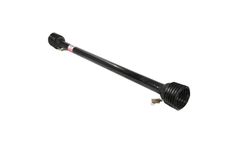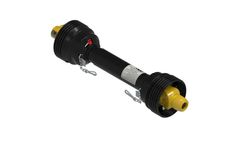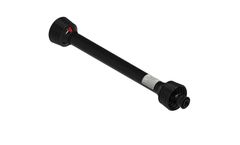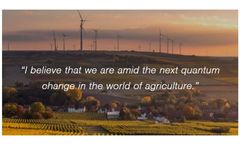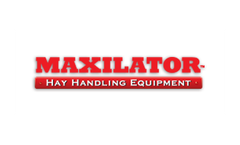Hay Baling Articles & Analysis: Older
13 articles found
Time to make hay! Or perhaps you are getting ready to store your hay. Your geographic location can determine what phase of hay production you are in. Regardless, it’s important to ensure you are testing moisture in hay. At BioZyme®, we focus on animal health and nutrition for all animals. We know that several species, including horses, cattle, sheep and goats, depend on high-quality ...
A few of the particular machines for agriculture that can be used with the 2 Series PTO Shaft can be utilized in are: Tractors 2 Series PTO shafts are typically employed in large tractors that require high torque and the capability to handle large-duty equipment. Balers - Balers to bale straw or hay typically require a high power output, as well as the PTO 2 ...
It makes it the ideal choice for high-speed tasks like mowing or baling. (2) A high torque capability High torque capacity: The 8 Series PTO shaft has been made to handle greater levels of torque and power over the seven Series PTO shaft, which makes it suitable for more demanding tasks. ...
PTO shafts of the 6 Series are often employed in agricultural applications like powering a mower or baler for hay. They usually consist of two shafts: one of which is connected to the source of power and one that connects to a machine, and the telescoping sleeve allows the shaft to be adjusted in length according to the needs. ...
Cross Wrap has over 27 years of experience in providing square bale wrapping solutions for the Waste-to-Energy sector. The company´s CrossWrap -method for square bale wrapping has gained a position as the industry standard among the vast majority of WtE -professionals, and business sector leaders. This blog will dive deep into the square bale wrapping method and clarify its benefits and how ...
We’ve Come a Long Way, Precision Farming Will Take Us Even Further As I sit here looking out my back window and watch my neighbor gathering up the last of the round bales of the season, loading them onto a bale trailer, it makes me reminiscent of days gone past. I think about life as a teenager during the summer, my friends and I spending many days on the ...
The full swing of summer will bring high temperatures, high humidity, and high chances of heat stress. Heat stress is a major concern in the beef industry, causing countless problems in cattle, such as a decrease in feed intake, diminished digestibility, and a significant negative impact on performance. High temperatures can cause cattle to reduce feed intake, which can negatively affect ...
This makes transporting and storing hay bales safer and easier for workers. The rust-proof thermoplastic coated Accumagrapple works as an attachment to your tractor or skid steer and satisfies these needs: Gathers up to 10 hay bales at a time in the field Lifts the bales onto a truck or trailer Unloads and ...
Bills says, his calves can utilise the forage better when feeding out with a Hustler X5000 bale feeder, it does such a gentle job on the hay and feeding out an even windrow. Bill goes through much effort to ensure that when he is baling his hay that the moisture content is perfect and not shattering the Alfalfa. ...
Our Hustler Business Development team in the USA recently got involved with a study being held at Oklahoma State University where they tested our bale feeders innovation in the market space. With a conclusion that they substantially reduce waste by well over 20% and improve feed efficiency and conversion when compared to traditional bale processors, unrollers, ...
It's simplicity and how well it works" Using a traditional method of hand feeding hay, Drausin ended up using an old bale wrapper for some help in unrolling the bales. ...
Granted, a level sensor might not be the best way to monitor the number of hay bales in a storage building, but a radar level sensor will handle all of the dusty feed and grain silos that need to be monitored. ...
Horse powered units as these balers were, they needed the help of men to put the hay into the balers and tie the hay into bales. Yet, they minimized manual work by carrying the hay from a place to the other, of course when they were placed on wheels. The real machine work started with square balers, the automatic ones in tying ...


